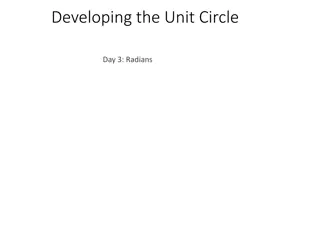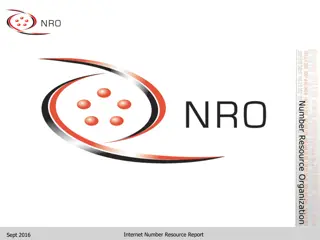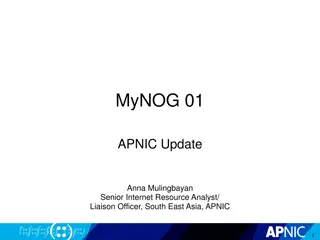
Wireless Communication Technology Essentials
Explore the fundamentals of wireless communication technology, covering topics such as the electromagnetic spectrum, radio propagation, characteristics of the wireless channel, MANETs, WSNs, and design challenges in ad hoc and sensor networks.
Download Presentation

Please find below an Image/Link to download the presentation.
The content on the website is provided AS IS for your information and personal use only. It may not be sold, licensed, or shared on other websites without obtaining consent from the author. If you encounter any issues during the download, it is possible that the publisher has removed the file from their server.
You are allowed to download the files provided on this website for personal or commercial use, subject to the condition that they are used lawfully. All files are the property of their respective owners.
The content on the website is provided AS IS for your information and personal use only. It may not be sold, licensed, or shared on other websites without obtaining consent from the author.
E N D
Presentation Transcript
TOPICS Fundamentals of Wireless Communication Technology The Electromagnetic Spectrum Radio propagation Mechanisms Characteristics of the Wireless Channel MANETs and WSNs concepts and architectures Applications of Ad Hoc and Sensor networks Design Challenges in Ad hoc and Sensor Networks.
Fundamentals of Wireless Communication Technology Transmitting/receiving voice and data using electromagnetic waves in open space. Information from sender to receiver is carried over a well defined channel.
Fundamentals of Wireless Communication Technology Each channel has a fixed frequency bandwidth & capacity (bit rate). Different channels can be used to transmit information in parallel and independently.
Electromagnetic Spectrum X rays and gamma rays are not used due to practical concerns Radio waves are easy to generate and most widely used.
Electromagnetic Spectrum Frequency Extremely Low Frequency (ELF) Band Name Wavelength 10,000 1000 Km Application 30 300 Hz Power line frequencies Voice Frequency (VF) 300 3,000 Hz 1,000 100 Km Telephone communication Very Low Frequency (VLF) 3 30 KHz 100 10 Km Marine communication Low Frequency (LF) 30 300 KHz 10 1 Km Marine communication Medium Frequency (MF) 300 3000 KHz 1000 100 m AM broadcasting High Frequency (HF) 3 30 MHz 100 10 m Long distance aircraft/ship communication Very High Frequency (VHF) 30 300 MHz 10 1 m FM broadcasting Ultra High Frequency (UHF) 300 3000 MHz 100 10 cm Cellular telephone Super High Frequency (SHF) Extremely High Frequency (EHF) 3 30 GHz 10 1 cm Satellite communication, Microwave links Wireless local loop 30 300 GHz 10 1 mm
Electromagnetic Spectrum VLF, LF, MF bands ground waves or surface waves SHF band space wave VHF band sky wave
Radio Propagation mechanism Reflection dimension of an object is larger than wavelength of radio wave Scattering dimension of an object is smaller than wavelength of radio wave Diffraction dimension of an object is comparable to the wavelength of radio wave
Characteristics of the wireless channels Path loss Fading Interference Doppler shift
Path loss Ratio of power of the transmitted signal to the power of same signal received by receiver. Dependent on radio frequency used and nature of terrain Path loss models Free space & Two ray Free space no attenuation of signals, only direct path P Pr r = P = Pt t G Gt t G Gr r ( ( /4 d) Two ray direct path & Reflected path P Pr r = P = Pt t G Gt t G Gr r (h (ht t h hr r/d /d2 2) )2 2 /4 d)2 2
Fading Fluctuations in signal strength when received at the receiver. Types (1) Fast/small scale fading (2) slow/large scale fading. Fast fading rapid fluctuations in amplitude, phase or multipath delays. Slow fading objects partially absorb the transmissions Counter measure Diversity & Adaptive modulation
Interference Types : (1) ACI (2) CCI (3) ISI Interference ACI CCI Counter measure Guard band Usage of directional antennas, dynamic channel allocation Adaptive equalization ISI
Doppler Shift Change in frequency when transmitter and receiver are mobile in nature. Higher frequency when both move towards Lower frequency when both move away
Applications of Ad hoc Networks Military applications (Secure & Cost) Communication among group of soldiers Communication among military objects (fleets of air planes or warships) Collaborative & Distributed computing (Reliability & Economic) Communication among group of people in conference Emergency operations Search & rescue, crowd control and commando operations Wireless mesh networks (Self organization & maintenance) Residential zones Highways Business zones Civilian regions University campuses Wireless sensor networks Hybrid wireless networks





















